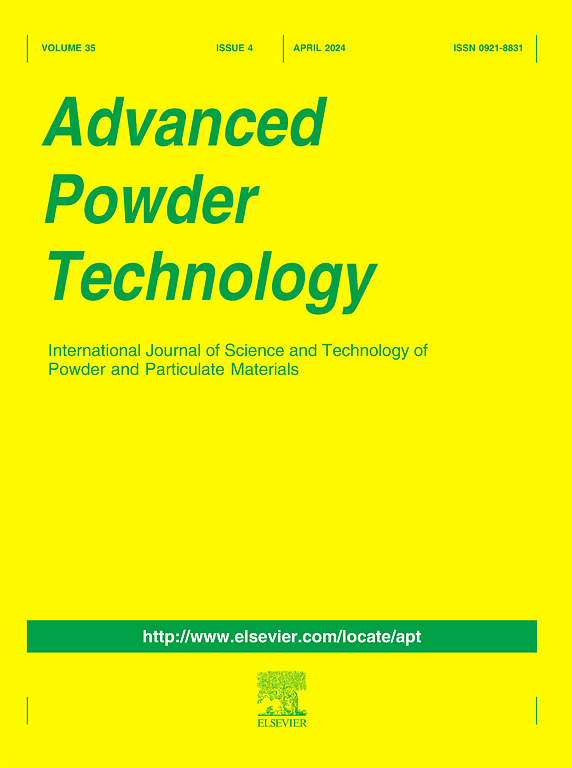一种用于回转窑颗粒床剖面预测的三层数字孪生结构
IF 4.2
2区 工程技术
Q2 ENGINEERING, CHEMICAL
引用次数: 0
摘要
回转窑颗粒床的形状对传热、气体分布和物料停留时间起着至关重要的作用。然而,由于封闭的高温和旋转条件,准确、快速地预测床层剖面仍然是一个重大挑战。针对这一问题,本文提出了一种用于回转窑床型预测的三层数字孪生(DT)体系结构。第一层是建模层,将物料运动的数学机理模型集成到一个仿真核心中,生成窑加工的仿真数据。第二层为数据层,收集出料口高度数据,用于迭代更新模拟结果,提高预测精度。第三层是交互层,其中设计了一个虚拟终端来检索和可视化地呈现结果。采用小型回转窑试验平台对该方法进行了验证。结果表明,所提出的DT结构可以在很短的时间内有效地预测颗粒床的稳态和动态状态。该研究为回转窑颗粒流的建模和预测提供了一种潜在的解决方案,并通过进一步优化显示了更广泛的工程应用前景。本文章由计算机程序翻译,如有差异,请以英文原文为准。

A three-layer digital twin architecture for granular bed profile prediction in rotary kiln
Granular bed profile in rotary kilns plays a critical role in determining heat transfer, gas distribution, and material residence time. However, due to enclosed high-temperature and rotating conditions, accurately and rapidly predicting the bed profile remains a significant challenge. To overcome this, this paper proposes a three-layer digital twin (DT) architecture for predicting the bed profile in rotary kiln. The first layer is the modeling layer, which integrates mathematical mechanism models of material motion into a simulation core to generate simulation data of kiln processing. The second layer is the data layer, where material outlet height data is collected and used to iteratively update simulation results, improving prediction accuracy. The third layer is the interaction layer, where a virtual terminal is designed to retrieve and visually present the results. A small-scale rotary kiln test platform is applied to validate proposed DT. Results indicate that the proposed DT architecture can effectively predict granular bed profile in both steady or dynamic states within a very short time. This study provides a potential solution for modeling and predicting granular flow in rotary kilns and shows promise for broader engineering applications with further optimization.
求助全文
通过发布文献求助,成功后即可免费获取论文全文。
去求助
来源期刊

Advanced Powder Technology
工程技术-工程:化工
CiteScore
9.50
自引率
7.70%
发文量
424
审稿时长
55 days
期刊介绍:
The aim of Advanced Powder Technology is to meet the demand for an international journal that integrates all aspects of science and technology research on powder and particulate materials. The journal fulfills this purpose by publishing original research papers, rapid communications, reviews, and translated articles by prominent researchers worldwide.
The editorial work of Advanced Powder Technology, which was founded as the International Journal of the Society of Powder Technology, Japan, is now shared by distinguished board members, who operate in a unique framework designed to respond to the increasing global demand for articles on not only powder and particles, but also on various materials produced from them.
Advanced Powder Technology covers various areas, but a discussion of powder and particles is required in articles. Topics include: Production of powder and particulate materials in gases and liquids(nanoparticles, fine ceramics, pharmaceuticals, novel functional materials, etc.); Aerosol and colloidal processing; Powder and particle characterization; Dynamics and phenomena; Calculation and simulation (CFD, DEM, Monte Carlo method, population balance, etc.); Measurement and control of powder processes; Particle modification; Comminution; Powder handling and operations (storage, transport, granulation, separation, fluidization, etc.)
 求助内容:
求助内容: 应助结果提醒方式:
应助结果提醒方式:


